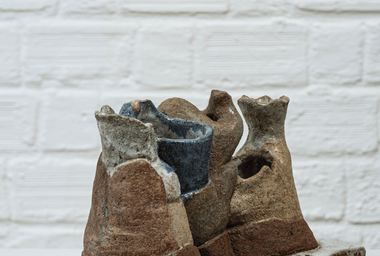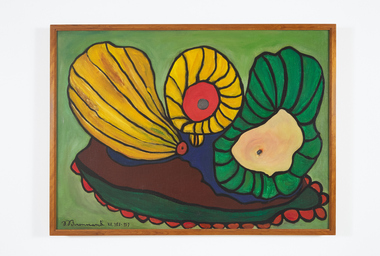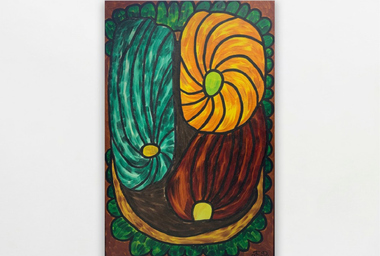
Francisco Brennand, a primitive among the moderns
Feb 19 – Apr 9, 2022
In collaboration with Gomide & Co
Curated by Julieta González
Carpintaria
Rua Jardim Botânico 971,
Rio de Janeiro
Directions
Download
Carpintaria and Gomide & Co are delighted to present ‘Francisco Brennand, a primitive among the moderns’. Curated by Julieta González, the show expands on the exhibition of the same name held in São Paulo.
Francisco Brennand: A primitive among the moderns
By Julieta González
This exhibition takes as a point of departure the unintended (mis)reading of Francisco Brennand’s work on the occasion of his participation at the 5th Bienal de São Paulo in 1959. He was cast among the so-called primitive artists, probably on account of the figurative nature of his works that ran counter to the dominant avant-garde explorations of concrete art and geometric abstraction prevalent in Brazil at the time. The Bienal catalogue essay by Paulo Mendes de Almeida, describing the Brazilian section, states that it was the result of a juried submission and that the predominant tendency was that of abstraction, while the figurative works submitted were few and mostly by so-called primitive artists. In fact, while many Brazilian artists were experimenting with geometric abstraction in the 1950s, at a time in which the country was undergoing a rapid transformation in order to achieve Juscelino Kubitschek’s stated goal of “fifty years of development in five”, Brennand was working in his ceramic workshop, fabricating plates, plaques and murals with floral and vegetal motifs, such as the cashew fruit, native to the Northeast of Brazil, which earned him the moniker “painter of cashews.” This isolated endeavor was described by Lina Bo Bardi, in a newspaper article on his work, as one close to the coastal civilizations of Brazil, evidence of a “peasant and artisanal intelligence that seeks its expression in the earth and in the human condition,” an approach to art that was misunderstood by the jury of the Bienal de São Paulo. Bo Bardi mentions the Bienal incident in her article as symptomatic of a divide between those seeking the way of progress and modernization, and those who cultivated a relation with nature, place, and local traditions.
Indeed, Brennand chose to work against the current of geometric abstraction and devote himself to an exploration of primitive and archaic forms. Throughout his entire life, he developed a personal language independent of the dominant artistic narratives that informed the art of his contemporaries in Rio and Sao Paulo. Moreover, this chosen position resonated with other artists and intellectuals of the Nordeste, from Cicero Dias to Ariano Suassuna, similarly engaged in what Lina Bo Bardi described as a quest for an “autonomous culture, built on its own roots,” in contrast to “the inauthenticity of imported schemes” that, in her view, prevailed in the artistic landscapes of Rio and São Paulo. Bo Bardi’s opinion, was informed by the many changes taking place in 1961, with Joao Goulart’s reformas de base, and the reassessment of folk and popular traditions by organizations such as the CPC, as well as her own ideological orientation. Nevertheless, other factors seem to be at play in Brennand’s chosen path that go beyond ideological concerns, and that this small exhibition of his works aims to shed light on.
On the occasion of the Bienal Brennand presented three still lifes, one of which was a homage to Ingres, painted in a seemingly crude fashion, lacking perspective, with flattened elements on planes of color. These paintings can yield insights into his motivations and the role the genre of still life came to play in his production and in this exhibition. On the one hand one can read the Parisian influence of artists such as Fernand Léger but on the other, the profound mark left by an encounter that took place just before he left Brazil to pursue his studies in Paris. In 1949, Brennand spent a few days in Rio before boarding the ship that would take him to Europe, and there, he met a young artist, Almir Mavignier, who took him to visit the workshops he was organizing with psychiatrist Nise da Silveira at the Hospital Dom Pedro at Engenho de Dentro. There, Brennand witnessed firsthand the effect that painting had on the patients and the particularly powerful art that they produced. He was profoundly impressed by the work of patients Emygdio de Barros and Raphael Domingues, and would write in his diary about their work, particularly of Raphael whose uninterrupted lines flowed in such a way that the work “seemed psychographed”. Brennand wondered “what strange mechanism triggers his [Raphael’s] mind in order to arrive at those levels of apprehension of absent images?” There, Brennand understood that for artists such as Raphael and Emygdio, the model was certainly not important, what Mario Pedrosa precisely identified as a “vital necessity” was in fact the driving fore in their work. Moreover, this encounter left Brennand in a state of perplexity; at Engenho de dentro, he had “discovered things that were unbeknownst to [him] before, not only in regard to art but also to the human condition and its deviations (…) But were those really deviations?” he asked himself, while at the same time he “felt strangely diminished and disoriented in regard to the future education” he was about to receive in Paris; as “all the rules had been infringed.”
This experience, just before his trip to Paris, embarked Brennand on a personal quest motivated by the same vital necessity that animated the work of Emygdio and Raphael, one that took him in many directions except those dictated by the modernist canon and geometric abstraction. In this sense, perhaps, we can read this resistance to outside influence, and to the modern, not as a symptom of naiveté but rather of a desire to reenchant the world. In the face of modernity’s disenchantment of the world, to use Max Weber’s expression –that is, its transformation into a secular, bureaucratic and techno-scientific society–Brennand’s approach seems oriented towards a reenchantment that would imply return to nature, to archaic traditions, and to an alchemic vision that resides in the transmutation of elements and opens up a space for other life forms, including those of seemingly inanimate objects.
Reenchanting the world
A contemporary reappraisal of Brennand’s production demands an appreciation of the lexicon of forms that constitute his artistic language: hybrids between the human, animal and vegetal world, eggs hatching serpents, fountains of life that emerge from the fusion of body parts and sexual organs, mythological beings, and a significant animistic inflection that runs throughout his entire production, particularly his ceramic sculptures. The imaginary world that he built for himself on the ruins of a former brick factory in Várzea, on the outskirts of Recife in Pernambuco, is precisely populated by those “horrible mixtures” the Western world has sought to extricate itself from; hybrid creatures of myth that roam ancestral and indigenous cosmogonies. Moreover, the hybrid and animistic nature of Brennand’s work seems to call out for a reading that resituates both the terms “primitive” and “animistic” taking as a point of departure that fortuitous misplacing of his work among the primitive artists in the Bienal de São Paulo. The term animism was coined by anthropologist Edward Tylor in 1871, to describe the attribution of a soul to natural entities and objects by “primitive” cultures. In fact, Tylor placed animism as the essence of the primitive ethos, the fulcrum of the Great Divide between Western and non-Western cultures, and this is precisely where Brennand decided to carve a niche to build his personal universe.
Always working at the intersection of sculpture and craft-based industry, Brennand reactivated the ovens at the factory and set up a small-scale artisanal ceramic production that produced tiles and utilitarian objects (jars, vases, trays, fruit platters, bowls, pitchers, plates) with his characteristic floral motifs, which gave financial and artistic autonomy to him and the community of workers he employed there. If, as Max Horkheimer and Theodor Adorno stated in Dialectic of the Enlightenment, “animism had endowed things with souls [and] industrialism makes souls into things,” Brennand created an industry where workers, in fact, far from being alienated, endeavored, along with the artist, to produce objects that seemed to have a life of their own. This animistic world thus emerged from the labor and the ovens that produced these artifacts, utilitarian objects that are never the subject of epic representation but rather at the center of the lowliest of the classical genres, the still life.
The exhibition charts a trajectory from the daily domestic artifact at the center of the still life to the mythic beings brought to life by the sacralizing power of fire. We are taken from one “domestic” scene to a series of other unhomely ones: a sculptural still life, a homage to Morandi, appears to melt and deform as if animated by some interior life; a spheres is attacked by large nails; an oversize kettle suddenly appears to grow several spouts and a breast to become a live creature; a large cup becomes a shapely female figure; a vase grows a multitude of breasts and female sexual organs; a Brancusian tower of jugs and recipients becomes an Idol … In Brennand’s singular domestic realm, even bananas have become anthropophagic. Brennand acknowledged the animistic orientation in these works, particularly in the series of plaques that he produced in the early 1980s which stemmed from an exploration that took the still life into new and unfamiliar territories. The plaques were cast in several firings, inserting objects and tools into them, experiments that for Brennand were a sort of “soldering with fire, as the forms meld into each other with every different firing” as a result of which “some of these pieces come closer to amulets or fetishes than to paintings or ornaments. Fire ends up sacralizing them”.
Brennand never used the term reenchantment but his choice to remain at the margins of the modern, to create a haven for non-alienated labor at the root of his production, to recover myth, to re-sacralize the world and to breathe life into creatures that are at the intersection of the natural, erotic and esoteric realms, all seem to speak of a desire to restore the enchantment that modernity stripped the world bare of. His writings and diary which chronicle his life and work since the end of the 1940s, at the time of his momentous encounter with Emygdio and Raphael at the Engenho de Dentro, display an extraordinary awareness of the interconnection of the human, plant and animal worlds, a keen ecological consciousness, and an awareness of the perils of unfettered progress and industrialization. We may perceive this as a nostalgia for times past, but interestingly Lina Bo Bardi’s article yields yet another insight into Brennand when she describes her perception of his uncanny likeness to a medieval artist laboring with his assistants in a workshop: “his simplified ceramics: plates and plaques aligned on the floor and on the tables at the old plantation house (…) transmit a sense of medieval austerity. A strange, almost inappropriate, sensation in a land so far from that atmosphere. Suddenly, amidst the greenery and the slow animals of this landscape, it becomes clear that this strange feeling of the Middle Ages is characterized by that which made the Middle Ages remarkable: human measure, labor, and the proximity of humans to nature.” In no way are we to read this as an idealization of a pre-modern spirit in Brennand’s work but rather an insight that allows us to identify the possibility of a post-cartesian future, already prefigured in his practice as an artist and craftsman.
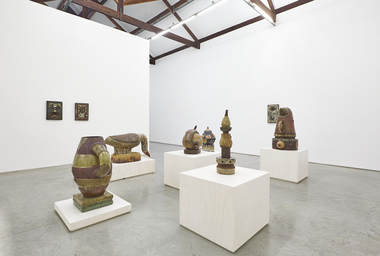
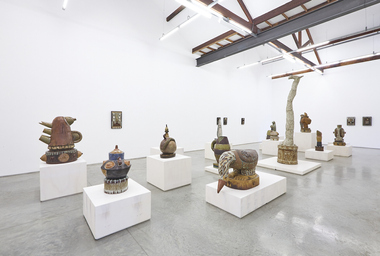
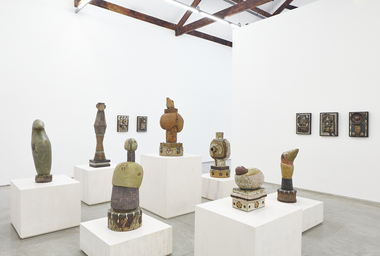
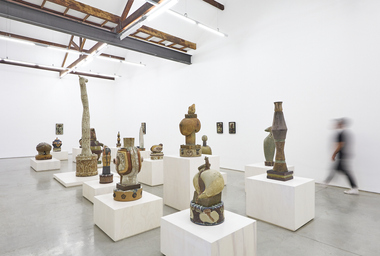
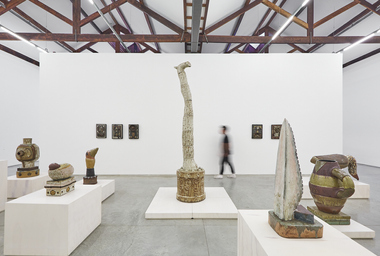
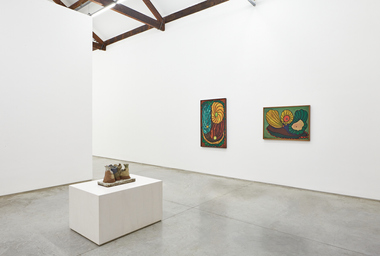
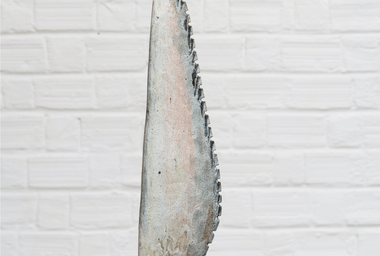
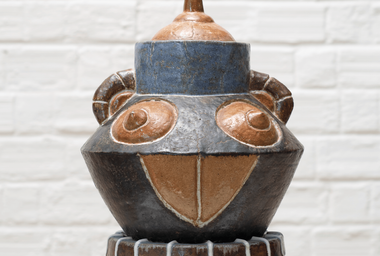
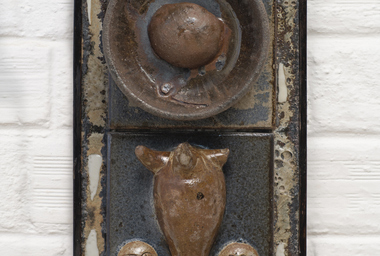
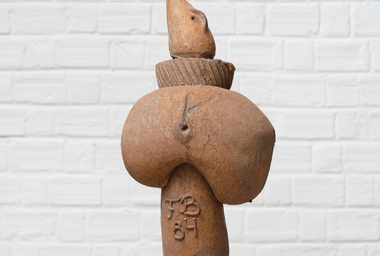
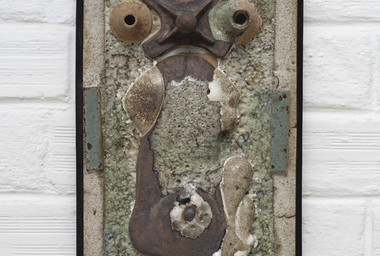
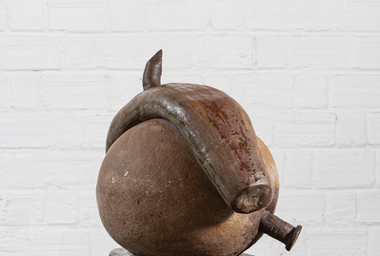
![Francisco Brennand Sem Título [Untitled], 1982](https://fdag.com.br/app/uploads/2022/01/francisco-brennand-sem-titulo-untitled-1982-380x256.jpg)
